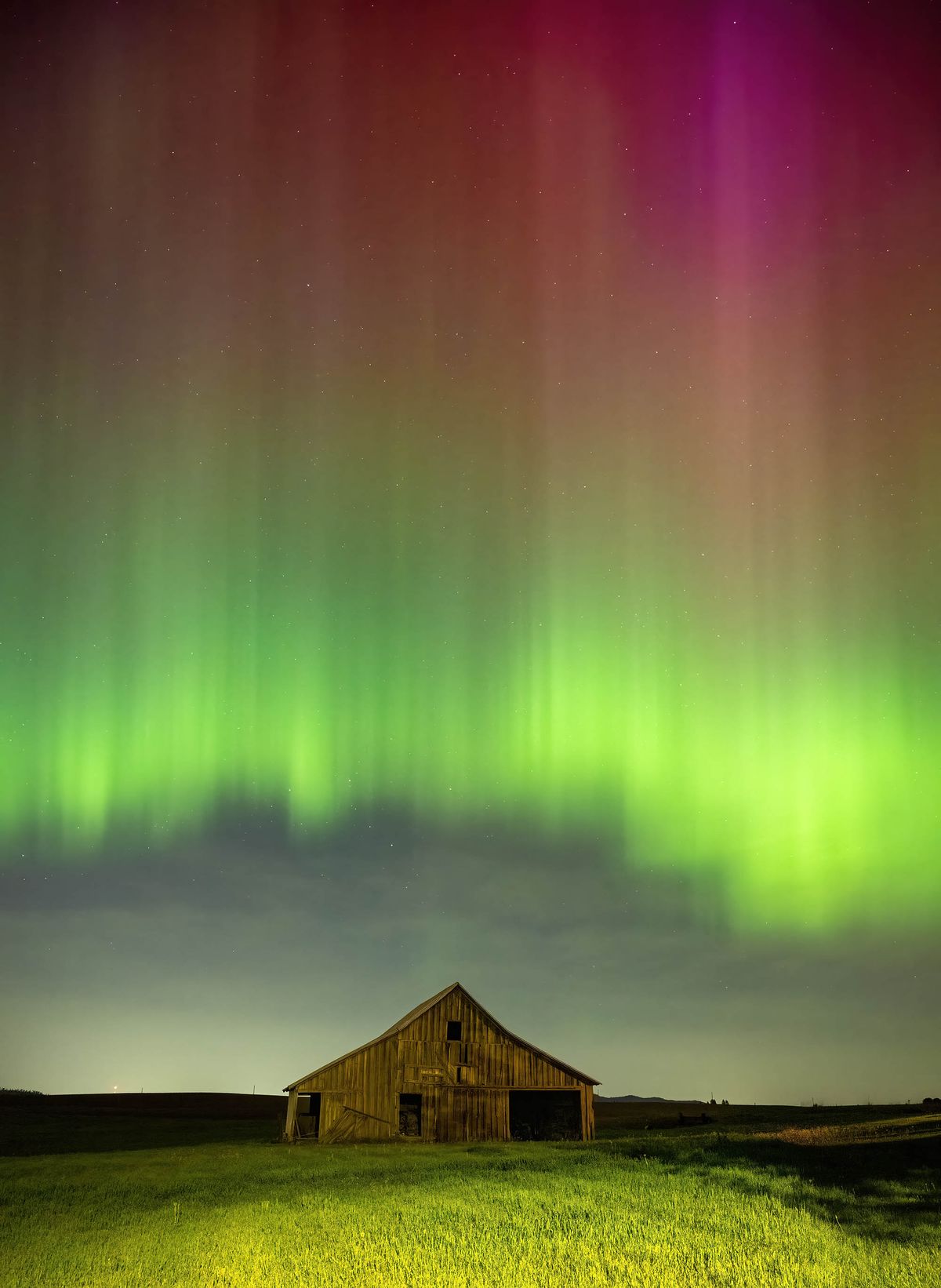Ask Dr. Universe:

Dr. Universe: What causes the northern lights? Are there southern lights, too? – Sebastian, 10, Minnesota
Dear Sebastian,
For many people, seeing the northern lights is the ultimate bucket list item. Lately, experiencing them has gotten a whole lot easier.
I asked my friend Michael Allen about those dancing green and pink lights. He’s an astronomer at Washington State University.
He told me that, along with its light, the sun emits charged particles—mostly protons and electrons. Those particles freely stream into space. Then, some of them bump into Earth’s magnetic field.
Earth has a magnetic field because there’s molten iron in its core. As the liquid metal moves and flows, it makes a giant magnet. The magnet is strongest near Earth’s poles. It makes loops of magnetic energy around the planet that reach out into space.
That magnetic field captures the charged particles that drift off the sun. It pushes them toward Earth’s poles, where the magnetic pull is the strongest.
As the charged particles zoom to the poles, they bang into atoms hanging out in the upper atmosphere. That’s mostly oxygen and nitrogen.
During those collisions, the atoms absorb the particles’ energy. Each atom has a cloud of electrons around it. When the atom absorbs a particle’s energy, its electron cloud swells up. Then, the cloud relaxes again, burping out the extra energy as light.
The light’s color depends on the kind of atom doing the burping. The northern lights are mostly green and pink. That’s because oxygen gives off green light. Nitrogen gives off pink light.
You can usually see those dancing lights at Earth’s poles.
“A charged particle—like a plus or a minus—is going to go wherever the pull is the strongest,” Allen said. “That’s why you see the lights at the poles and not the equator. The particle density is higher at the poles because they migrate there.”
When the lights happen near the North Pole, they’re called the northern lights or aurora borealis. When they happen near the South Pole, they’re called the southern lights or aurora australis.
We don’t hear about the southern lights as often. That’s because there’s a lot less land near the South Pole. So, fewer people can see them.
But, lately, people have been seeing those waves of dancing light pretty far away from the poles. I saw them near WSU Vancouver. You might have seen them where you are, too.
Every 11.1 years, the sun becomes more active than normal. That’s called a solar maximum.
When the sun is more active, it pushes more charged particles into space. With so many charged particles pelting toward Earth, the collisions don’t just happen at the poles. Charged particles and atoms start colliding between the poles and the equator, too.
That means anyone in the “light” place at the “light” time can see a bucket list worthy space show.
Sincerely,
Dr. Universe
Adults can help kids submit a question at askdruniverse.wsu.edu/ask.